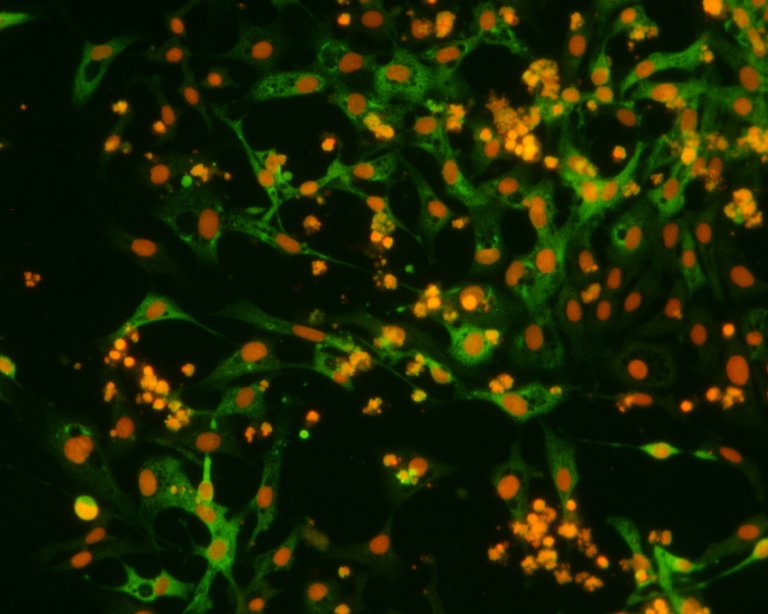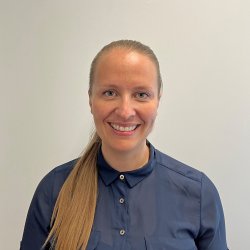
PD is listed in Norway (category F), and suspicion of or confirmed PD must be immediately reported to the Norwegian Food Safety Authority. Since 2014, the disease has also been on the World Organisation for Animal Health (WOAH) list of infectious fish diseases. This means that countries that can document freedom from the disease can refuse to import salmonid fish from PD-affected areas in Norway.
Pathogen and Transmission
Pancreas disease is caused by salmonid alphavirus (SAV), also known as PD virus. Susceptible species include Atlantic salmon, rainbow trout, Arctic char, and sand flounder.
Seven genotypes of SAV are known. In Norway, only SAV2 and SAV3 have been detected:
- SAV3 is endemic in salmon and rainbow trout along the Norwegian west coast.
- SAV2 is known from freshwater-farmed rainbow trout in France, Scotland, and several other European countries (where the disease is often called sleeping disease – SD). A marine variant of SAV2 has been detected in salmon during the seawater phase and is the cause of PD both in Scotland and in Central Norway.
- Other genotypes (SAV1, SAV4–SAV7) are found in Scotland and/or Ireland, with SAV5 also detected in sand flounder and SAV7 in ballan wrasse.
Under laboratory conditions, it has been shown that SAV retains infectivity best in cold environments compared to higher water temperatures, and the same applies to survival in the fish's blood.Therefore, the disease is more insidious and can spread effectively during the cold season.The primary reservoir for SAV is infected farmed fish. PD is highly contagious and transmits horizontally within sites and across connected fjords through water currents. It can also spread via contaminated, non-disinfected equipment and movement of infected fish
Fish groups may be infected with SAV without developing clinical disease, but stress can trigger or exacerbate outbreaks.
Clinical signs
The first sign of PD is often a sudden drop in feeding. Affected fish may gather near the surface against the current. Mortality typically begins after 2–3 weeks.
Fish may show extensive muscle damage, including esophageal musculature. Heart and skeletal muscle lesions impair circulation and affect swimming behaviour. These changes can lead to poor slaughter quality.
Chronic pancreatic damage reduces enzyme production and leads to decreased growth, increased feed conversion ratios, development of runts, and longer production cycles due to sustained loss of appetite.
Mortality in SAV3 infections varies from low to moderate but can be high in some outbreaks. SAV2-related PD generally causes lower mortality, but high mortality can be observed in individual cages.
Differential diagnoses
Heart and skeletal muscle inflammation (HSMI) and cardiomyopathy syndrome (CMS) are potential differential diagnoses. However, unlike PD, they do not cause lesions in the exocrine pancreas. In some cases, multiple diseases may occur simultaneously at the same site.
Diagnosis
The Norwegian Veterinary Institute is both the national and international reference laboratory for PD.
Suspected cases must be reported to the Norwegian Food Safety Authority. Diagnosis is based on histopathological examination for characteristic lesions, and SAV is detected by real-time RT-PCR. Genotyping is mandatory. Immunohistochemistry, virus isolation in cell culture, and detection of neutralizing antibodies in serum/plasma may also be applied.
Outbreaks and infected sites are listed in the BarentsWatch system.
Occurrence
Two parallel PD epidemics are currently ongoing in Norway. SAV3 was first identified near Bergen in the late 1980s and has been widespread along the West Coast since 2003–2004.After the introduction of marine SAV2 in 2010, PD caused by this variant spread rapidly in Central Norway. Today, most SAV3 cases are found south of Stadt, while SAV2 cases are primarily found north of Hustadvika in Møre og Romsdal and Trøndelag.
Surveillance
PD has been regulated by legislation since 2007 and was previously monitored through a national surveillance program (2012–2017). This program was replaced by the national PD regulation in August 2017, which has since been updated.
The regulation requires monthly sampling of 20 fish at all sea sites with farmed salmonids in untreated seawater. All samples are tested for SAV by PCR, and positive results must be reported to the Food Safety Authorities.
The regulation defines a continuous PD zone from Jæren in the south to Skjemta in Flatanger in the north. The rest of the Norwegian coast is divided into two surveillance zones extending toward the Swedish and Russian borders. The goal is to reduce the impact of PD in the endemic zone, prevent establishment in surveillance zones, and limit the spread of SAV2 and SAV3.
Control measures
Intensive monitoring, through the PD regulation, has made it possible to detect PD early and thereby prevent or reduce the spread of infection and disease.Early detection enabled by regulation and surveillance is key to reducing transmission and disease.
Focusing on sea entry within larger fallowed areas and measures related to the transport of smolt and slaughter fish are important infection control measures. Control of seawater intake during the production of post-smolt in the PD zone will also be a key measure. From January 1, 2021, the Norwegian Food Safety Authority requires treatment of transport water both within and outside the PD zone. To combat the spread of SAV to the surveillance zones, rapid culling of infected populations outside the endemic zone is advisable. It is also important to implement good hygiene measures both during the transport of fish for slaughter and in the treatment of slaughter waste.Several commercial vaccines against PD are available. Vaccination is widespread in the Western part of Norway (PO2–PO5) but is also increasingly used in Mid-Norway, based on vaccine purchase data. The effectiveness of vaccines against SAV has been debated. The vaccines have been shown to reduce the severity of the disease, and some have also been documented to reduce lost growth and lower mortality. Additionally, vaccination can contribute to reduced shedding of the virus from infected fish. Their success depends heavily on infection pressure, so additional biosecurity measures are crucial.

